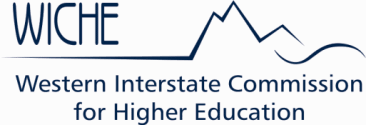Nurse Anesthesia

Our D.N.P. Nurse Anesthesia Program features:
- Diverse clinical placements
- Faculty with well-rounded expertise
- Regional anesthesia training
- 100% overall national certification pass rate
- 100% employment within six months of graduation
The program
The OHSU Nurse Anesthesia program prepares registered nurses to become advanced practitioners in the field of anesthesia, where they administer general and regional anesthesia to surgical and obstetric patients. Students earn a Doctor of Nursing degree upon completion of the 36-month program. Most courses are offered face-to-face on campus. Core courses may be provided in an online or hybrid format.
The Nurse Anesthesia program educates registered nurses with critical care experience in the advanced practice specialty of anesthesia. The program provides nurse anesthesia students with a solid foundation in scientific knowledge, clinical skills, and professional accountability. Students develop the knowledge and skills to deliver safe anesthesia care using sound clinical judgment to diverse patients across the lifespan.
This program was named a one of the top Nurse Anestheisa programs in the nation by U.S. News & World Report in 2024.
Goals of the Nurse Anesthesia program:
- Provide a positive and supportive learning environment that meets adult learners' needs.
- Prepare the professional nurse in the art and science of anesthesia.
- Meet the societal need for safe and competent anesthesia care.
Accreditation
The Oregon Health & Science University Nurse Anesthesia Program is accredited by the Council on Accreditation of Nurse Anesthesia Educational Programs to October 2028.
Council on Accreditation of Nurse Anesthesia Educational Programs (COA)
10275 W. Higgins Rd., Suite 906
Rosemont, IL 60018-5603
Main Number: 224-275-9130
Email: accreditation@coacrna.org
Website: COACRNA.org
Recent faculty publications
Our faculty are dedicated to research, innovation, and higher education for advancing anesthesia practice and education. Their passion for anesthesia research and teaching methodology has been published in various peer-reviewed journals and anesthesia textbooks and has been presented at national conferences. Below are a sample of the work that our faculty have been involved in for the last five years:
- Kato MA, Zurakowski D, Adams A, Soelberg J, Staffa SJ, Bradford VA, Efune PN, Rodgers McCormick ME, Grivoyannis AD, Rossmann Beel E, Correll LR, Cheon EC, Tan GM, Thomas JJ, Fernandez AM, Teng HC, Khanna N, Raman VT, Brzenski AB, Frugoni BJ, Sheth MM, Rugnath RM, Meier PM. Prevalence of COVID-19 and Risk Factors for Infection Among Pediatric Anesthesia Patients: A Report From the PEACOC Research Network. Anesth Analg. 2023 Aug 1;137(2):383-391. doi: 10.1213/ANE.0000000000006227. Epub 2022 Oct 21. PMID: 36269171.
- Lovestrand D, Beaumont CD, Calder MS, Schmidt M, Calaro R. Simulation Training Exercise to Improve Outcomes of Emergence Delirium in Patients With Posttraumatic Stress Disorder. AANA J. 2021 Jun;89(3):187-193. PMID: 34042568.
- Osborne-Smith, L.A. & Duncklee, G. Bioterrorism and Its Impact on the PACU. In: Odom- Forren (Ed.) Drain’s Perianesthesia Nursing: A Critical Care Approach. 8th Ed. Elsevier, St Louis, MI; 2022.
- Reynolds E, Muffly M, Apple K, Umbdenstock R, Soelberg J, Durkin E, Raval MV, Rich BS, Moriarty KP, Kim SS, Danko M, Lee JD, Metzger J, Fisher JC, Gow KW. Pediatric Surgery from the Roads Less Traveled: Challenges, Communication, and Collaboration from a Community Nonteaching Hospital. J Pediatr Surg. 2023 Jun;58(6):1053-1058. doi: 10.1016/j.jpedsurg.2023.02.008. Epub 2023 Feb 17. PMID: 36925400.
- Swerdlow BN. Surgical smoke and the anesthesia provider. J Anesth. 2020 Aug;34(4):575-584. doi: 10.1007/s00540-020-02775-x. Epub 2020 Apr 15. PMID: 32296937.
- Swerdlow B, Osborne-Smith L. A Cognitive Template for Management of Perioperative Adverse Events. AANA J. 2023 Apr;91(2):137-143. PMID: 36951843.
- Swerdlow B, Osborne-Smith L. Sugammadex: Pharmacometrics, Clinical Utility, and Adverse Effects. AANA J. 2022 Apr;90(2):133-140. PMID: 35343895.
- Swerdlow B, Osborne-Smith L, Arditti D, Hatfield LJ. Cognitive Competence and Curriculum Development in Nurse Anesthesia Education: A Pilot Study. Adv Med Educ Pract. 2023 Jun 19;14:627-635. doi: 10.2147/AMEP.S407737. PMID: 37360837; PMCID: PMC10289102.
- Swerdlow B, Osborne-Smith L, Berry D. Anesthesiologists Have an Important Role in Preclinical Nurse Anesthesia Education. Adv Med Educ Pract. 2020 Dec 16;11:997-1003. doi: 10.2147/AMEP.S286546. PMID: 33364870; PMCID: PMC7751290.
- Swerdlow BN, Osborne-Smith L, Hatfield LJ, Korin TL, Jacobs SK. Mock Oral Board Examination in Nurse Anesthesia Education. J Nurs Educ. 2021 Apr;60(4):229-234. doi: 10.3928/01484834-20210322-09. Epub 2021 Apr 1. PMID: 34038283.
- Swerdlow B, Osborne-Smith L, Soelberg J. Design of a Workshop for Focused Transesophageal Echocardiography During Noncardiac Surgery in Nurse Anesthesia Education. J Med Educ Curric Dev. 2024 Feb 1;11:23821205241229001. doi: 10.1177/23821205241229001. PMID: 38313304; PMCID: PMC10836131.
- Swerdlow B, Soelberg J, Osborne-Smith L. Distance Education in Anesthesia Using Screen-Based Simulation - A Brief Integrative Review. Adv Med Educ Pract. 2020 Aug 20;11:563-567. doi: 10.2147/AMEP.S266469. PMID: 32922115; PMCID: PMC7457836.
- Swerdlow B, Soelberg J, Osborne-Smith L. Synchronous Screen-Based Simulation in Anesthesia Distance Education. Adv Med Educ Pract. 2021 Aug 26;12:945-956. doi: 10.2147/AMEP.S323569. PMID: 34471396; PMCID: PMC8405223.
Outcome data for the graduating class of 2023
- Employment within six months of graduation: 100%
- National Certification Examination first-time pass rate: 92.8% (13/14)
- Attrition rate: 0%
Outcome data 2008 –2023
- Graduation rate from 2008-2023: 170 of 177 admitted students (96%) completed the program.
- The first-time pass rate for 2008-2023: 92.3% (157 of the 170) graduates passed on the first attempt.
Upon completion of the D.N.P. degree, graduates will be able to:
- Demonstrate readiness to enter clinical practice via specialty competencies with the appropriate scientific knowledge, and considerations for its application to practice.
- Apply ethical principles along with the standards of professional conduct to clinical care, research, and education.
- Evaluate emerging healthcare systems and policies that influence the delivery of cost-effective patient care.
- Generate entry-level practice scholarship by completing a clinical practice improvement project based on the principles of improvement science.
- Model interprofessional communication and collaboration to improve individual and/or population health outcomes.
- Identify and address gaps in professional knowledge through ongoing reflection to support the principle of life-long learning.
The 36-month program of study is rigorous and highly clinically focused. In the first year, students receive a firm foundation in basic anesthesia science and weekly laboratory sessions in our state-of-the-art clinical simulation center. The second year incorporates clinical rotations designed to expose the student to various anesthesia experiences. Students will also complete a scholarly project during this time. The third year is designed to be a clinical immersion with experiences that include a broad range of practice settings and specialty practice.
Upon completion of the OHSU Nurse Anesthesia Program, the graduate will also be able to:
- Deliver safe and culturally competent anesthesia care to patients of all ages and physical conditions.
- Develop and implement anesthesia management throughout the peri-anesthetic continuum using various current anesthesia techniques, agents and equipment.
- Apply knowledge to practice in decision-making and problem-solving.
- Provide nurse anesthesia care based on sound principles and research evidence.
- Interact professionally with integrity using appropriate verbal, nonverbal and written communication in the delivery of perianesthetic care.
D.N.P. student learning outcomes (applies to all post-master’s D.N.P. and all APRN specialties)
- Demonstrate readiness to enter clinical practice via specialty competencies with the appropriate scientific knowledge, and considerations for its application to practice.
- Apply ethical principles and professional conduct standards to clinical care, research, and education.
- Evaluate emerging healthcare system policies policy that influences the delivery of cost-effective patient care.
- Generate entry-level practice scholarly completion of a clinical practice improvement project based on the principles of improvement science.
- Model interprofessional communication and collaboration to improve individual population health outcomes.
- Identify and address gaps in professional knowledge through ongoing reflection to support the principle of life-long learning.
Nurse Anesthesia program student learning outcomes
- Exhibit and appraise safe, vigilant care to patients across the lifespan, emphasizing continual quality improvement throughout the peri-anesthetic period.
- Provide patient-centered, culturally sensitive peri-anesthetic care based upon the performance of a systematic assessment of the patient’s condition and formulation of a comprehensive anesthesia plan.
- Demonstrate critical thinking throughout the peri-anesthetic period, emphasizing the anticipation of and response to varying clinical conditions.
- Facilitate collaborative relationships with patients, families, healthcare partners, and the community to promote effective communication of information and enhance patient safety.
- Conduct a systematic evaluation of evidence from current scientific literature as a basis for informed nurse anesthesia practice.
- Display a commitment to professionalism by exemplifying personal integrity, adherence to ethical standards, humility, accountability and compassion in all professional activities.

For all program specifics, Student Learning Outcomes and detailed school information, check out the School of Nursing Catalog/Student Handbook.

Contact us about this program today!
We're here to answer any questions you have about the OHSU School of Nursing.
Scholarships available
OHSU offers a variety of scholarships that can help fund your education.
Clinical sites
Students rotate to a variety of clinical sites. Get more information on clinical sites for the Nurse Anesthesia Program.
Simulation
The Nurse Anesthesia Simulation Program (NAP) is dedicated to providing students with hands on experiences in a controlled simulated clinical environment.

Don’t live in Oregon? You may qualify for in-state tuition through the Western Regional Graduate Program.